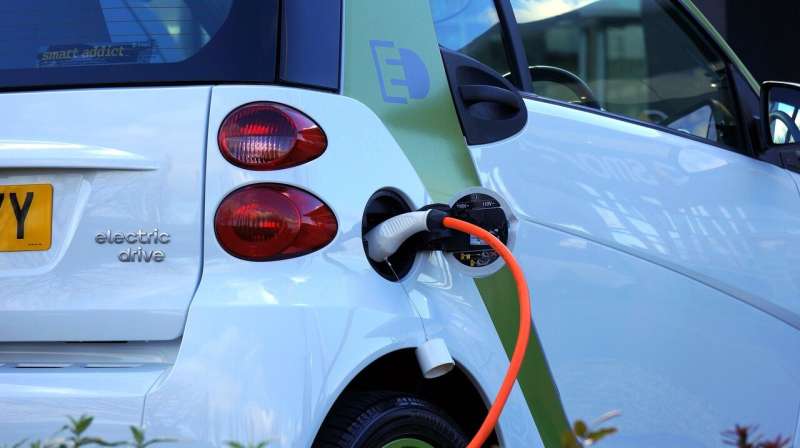Credit: CC0 Public Domain
Which comes first: the electric vehicle or the charging station? That question has perplexed some experts and officials tasked with nurturing the electrification of transportation in American cities.
Some have a clear view:
"If you can't imagine ownership because you can't see the infrastructure, or the infrastructure's not there, the demand won't come," said Laura Pritchard, a Chicago regional manager for Tesla. "So I'm of the opinion that we've got to solve the infrastructure piece first in order to get EV adoption, because it is a chicken or an egg situation, and in a city with a lot of density it will be hard for people to imagine making that lifestyle change if they don't see the support."
But that answer raises more questions: Who builds infrastructure before its customers exist?
"It's not really clear who can and should be owning and operating this infrastructure. No one seems to be jumping up to say I'll take that on," said Carolyn Quazzo, head of operations at EZ-EV, an Exelon-owned and incubated startup that promotes EV adoption. "Right now I feel like everyone's waiting for that first mover, and that makes it really hard to have things fall into place."
And what will that EV infrastructure look like when it's installed?
"We know what water, sewer, street lighting, gas and electricity, cable communication look like," said Elizabeth Kocs, director for partnerships and strategy at the UIC Energy Initiative. "They've been part of our existence and part of our visible landscape.
"So what should the shape of EV charging be?" Kocs asked a Chicago city official at a forum Thursday hosted by the Illinois Autonomous Vehicle Association. "What does it look like?"
"I'm going to let myself be vulnerable right now," replied Samantha Bingham, the clean-transportation program director for the City of Chicago's Department of Transportation. "I don't know, and I work for the city."
Seventy percent of Chicago residents live in multi-family dwellings, but more than 70 percent of EVs are registered to single-family homes, Bingham said.
"So what is the affordable, reliable option for charging for most Chicagoans? I think we have to study it and collect data on it to understand that better."
Visible infrastructure has to not only develop within cities, Bingham said, but beyond them into rural areas, even across state lines, so motorists see that they can drive their EVs long distances.
"Collaboration across state lines is very important, as well as internal collaboration within the state of Illinois to enhance all charging options in all sectors."
It's a big enough problem that Argonne National Laboratory is thinking about the questions too:
"I think it is a big issue that hasn't been solved yet," said Ann Schlenker, director of Argonne's Center for Transportation Research.
"When we think further out to the suburban area where people are commuting, we know that charging at home is the model that everyone prefers, and after that, workplace charging, so it's really important that an employer have that capability in order to enable an employee to make that choice. But when we're in a pedestrian-density sort of focus instead, and transit, and we've got this high-rise living instead, what does that really mean for an infrastructure need here?
"You get in these high densification areas, and what is the volume that is necessary to try to attract the ownership of these EVs, or usage of EVs if it isn't an ownership model? How many spots per resident? Is it that kind of a question? Is it how much time do we allocate for availability to a particular unit? How does that really work?"
Provided by Argonne National Laboratory
























